Was Cheers a Fire Hazard?
Here is the latest in a series of examinations into urban legends about TV and whether they are true or false. Click here to view an archive of the TV urban legends featured so far.
TV URBAN LEGEND: Cheers was a fire hazard.
On November 28, 1942, the trendy Boston nightclub, the Cocoanut Grove, caught fire with a packed crowd inside of over 1,000 people (the club’s capacity was 460).
The club had recently expanded with an attached lounge (the Melody Lounge). The club was decked up in a Casablanca theme, so there were paper and cloth decorations hanging from the ceiling and paper palm trees everywhere. Around 10:30 PM, a busboy went to replace a missing/blown out light bulb and dropped the replacement. He lit a match to find the bulb on the dark floor, found the bulb, blew out the match and replaced the bulb. However, the match managed to set a nearby paper palm tree on fire. That lit up and quickly spread to the ceiling where it set other decorations on fire – soon the fire was feeding off of oxygen and spread through the club.
Decades later, a re-opened fire investigation determined that it was actually methyl chloride that had leaked from a faulty refrigerator in the Melody Lounge that had led to the fire spreading so quickly.
In any event, while the fire itself was deadly, easily HUNDREDS of lives could have been saved had it not been for the construction of the bar. The main entrance was a lone revolving door. As you might imagine, a lone revolving door is quickly rendered useless by hundreds of people charging at it. Other sidedoors were actually bolted shut to keep patrons from skipping out on their bill. A stained-glass window was boarded over. And the few doors that WERE open were doors that opened IN to the building, and again, when a large group of people are charging towards a door, a door that opens IN to a building is effectively useless.
The tragedy was horrific, and actually stole some headlines from World War II.
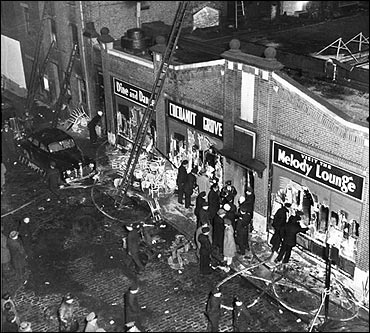
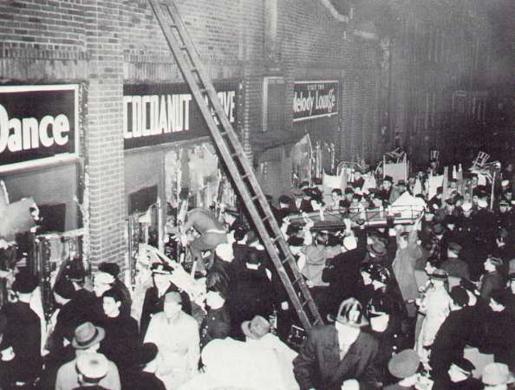
The owner of the bar was later arrested and convicted on 19 charges of involuntary manslaughter (19 random victims were chosen to represent the dead as a whole).
So what does this gruesome turn of events have to do with Cheers, you ask?
Well, some of the many changes in the fire code in Boston after the Cocoanut Grove tragedy is that any revolving door entrance has to have a regular entrance adjacent to it. In addition, any and all exits from a public bar, restaurant, club, etc. have to open OUT. They cannot open IN.
Let’s take a look at Cheers, courtesy of the Season 7 episode, “Norm, Is That You?”
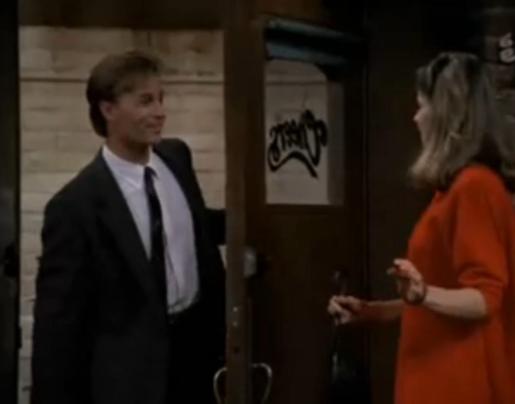
Yep, Cheers’ entrance opens IN.
Obviously, the Cheers bar is a set and not a real bar, but still, that’s pretty darn interesting.
The legend is…
STATUS: True
Feel free (heck, I implore you!) to write in with your suggestions for future urban legends columns! My e-mail address is bcronin@legendsrevealed.com
Tags: Cheers, Cocoanut Grove, sitcom
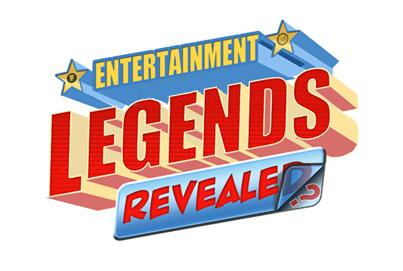

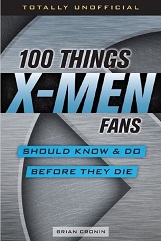
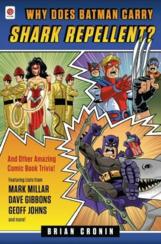


The other fire hazard about “Cheers” is that it lacked a second exit, also a no-no in public buildings.
Im think that this law regarding doors only applies to construction and renovation done after the law was passed. There was also a second exit (the stairway that leads upstairs to Mobey Dicks)
The restaurant and upstairs was called Melville’s, not Moby Dick’s.